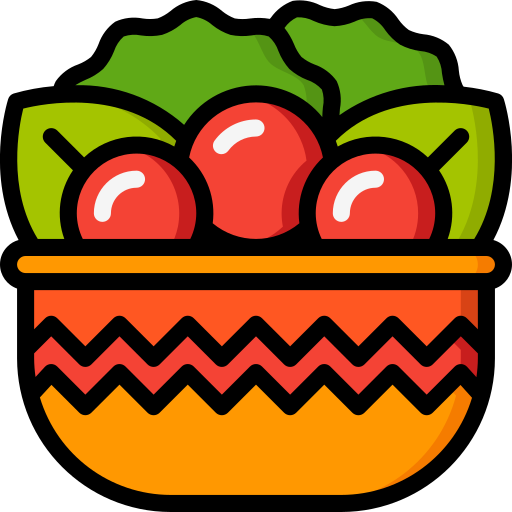Fresh Ingredients, Nutrition, and Healthy Eating
By: Puspita Majumdar
Senior Manager
Food and Nutrition Services
Swedish Ballard and Issaquah
Nutrition is the process by which living things utilize food for energy, growth, development, and maintenance. An individual’s nutritional status depends on how the body receives and utilizes the nutrients. No single food contains all essential nutrients in the amount needed for optimal health. Six classes of nutrients are required by the body and those are carbohydrates, protein, fat, vitamins, minerals and water. So, the basic understanding of nutrition in human health and a good meal planning are important for maintaining good nutritional status and to stay healthy. It retains most of the nutrients and food tastes better when you prepare meals with fresh ingredients.
Where and How to Start....
The good way to maintain healthy diet is to follow the Dietary Guidelines that provide advice on making good food choices to maintain a healthy weight, reduce risk of chronic disease, and promote overall health. The U.S. Departments of Agriculture (USDA) and Health and Human Services (HHS) work together to update and release the Dietary Guidelines every 5 years. The Dietary Guidelines provides science-based advice on what to eat and drink to promote health, to customize nutrient-dense food choices to reflect personal preferences and cultural traditions and meet individual’s nutrient needs. These guidelines are easy to incorporate in any ethnic diet and can be followed most of the days of the week. You need to focus on:
- Balance calories with physical activity.
- Emphasize on certain foods and nutrients such as fruits, vegetables, whole grains, fat-free or low-fat dairy products, meat, fish, and dairy.
- Retain the maximum nutrition in food by using fresh ingredients, proper storing, and cooking method.
- Consume fewer foods those do not have health benefits such as saturated fats, trans fats, cholesterol, added sugars, and refined grains.
2020 – 2025 Dietary Guidelines emphasizes on 1) Plant-based food 2) more water and less milk 3) including starch and fiber 4) avoiding consumption of red and processed meat. The purpose is to promote healthy eating by incorporating individual’s food choices and to prevent chronic diseases as well.
Let’s start from My Plate ….
- Focus on meeting food group needs and staying within calorie limits.
- My plate fits in all personal preferences and cultural traditions in all age groups. A healthy dietary pattern consists of nutrient-dense forms of foods those you get from fresh ingredients, such as fresh vegetables, fruits especially whole fruits, whole grains, and baked or boiled meat, fish, and poultry.
- When deciding what to eat or drink, choose options that are full of nutrients. Make every bite counts.

MyPlate replaced the Food Guide Pyramid and provides a personalized approach to healthy eating to help you meet your goals. It is also a good nutrition guide for everyone to follow. The plate is divided into sections of approximately 30 percent grains, 40 percent vegetables, 10 percent fruits and 20 percent protein, and also a portion of dairy. Besides, water is also very important for all bodily functions. The basic needs: 1500 ml + add 20 ml/kg for >20 kg body weight. Learn to plan healthy meals for you and family. Eat variety of nutritious food from all food groups.
Food Choices and Health Benefit...
Understand calories and serving sizes: The first step is to calculate your calorie needs. Calorie needs depend on many factors, such as age, sex, body weight, and activities. The basic calorie requirement of a healthy active adult is 25 - 30 calories per kg body weight. Plan to get most of the calories from nutrient-dense foods.
- The first step is to get the basic concept of the serving sizes of different food groups and how to estimate daily calorie intake. One serving of vegetables (1/2 cup steamed or 1 cup raw salad) contains only 25 calories. If you cook with oil, add 45 calories per teaspoon of oil - from this guideline you can easily estimate the calories of 1/2 cup vegetable curry (non-starchy). 1/2 cup juice or 1 medium apple contains 60 calories. 1/3 cup cooked rice or lentil (dal) or one small chapati provides 80 calories. Similarly, calories of chicken (one ounce lean - 55 calories) or egg (75 calories each) or goat (one ounce - 75 calories) curry can be easily calculated.
- One important thing to remember that one gram of fat contains 9 calories while one gram of carbohydrate or protein has 4 calories. One teaspoon oil (5 gram) contains 45 calories. Added fat in cooking contributes excess calories no matter if it is from vegetable oil or ghee or cream.
Eat plenty of vegetables and fruits….
We all know that fruits and vegetables are rich in vitamins, minerals, fiber, phytochemicals and antioxidants --- and low in calorie. Academy and Nutrition and Dietetics recommends consuming at least five to ten servings of fruits and vegetables per day. DASH (Dietary Approaches to Stop Hypertension) diet emphasizes fruits and vegetables, whole grains, fish, seeds, beans, and sodium limitation. Dietary intake of fruits and vegetables is associated with the reduction of risk of hypertension and arterial stiffness due to their high content of flavonoids.

Non-starchy vegetables may be the key to reduce the risks for excessive weight gain because these are lower glycemic load foods. Lower glycemic load foods such as broccoli, cauliflower, cabbage, spinach, lettuce, brussels sprouts are thought to produce fewer blood sugar spikes which can decrease hunger and reduce total calorie intake and also control blood sugar. Starchy vegetables, such as potatoes, corn, sweet potatoes are high glycemic load foods and contain higher calories (80 calories per serving). The flavorful and colorful root vegetables, such as carrots, daikon, radishes, and beets are from the cancer-fighting cruciferous family and high in vitamin C, Potassium, and vitamin A.
Do not forget the whole grains….
This is the food group that we usually fail to meet the recommended requirements. Fiber, nutrients, and starch are three different components of whole grains. They are high in B vitamins, vitamin E, magnesium, iron, copper, and fiber. Unrefined whole grain foods have high amount of soluble fiber and is important in preventing heart disease and controlling blood sugar. Studies showed that daily three servings of whole grains have beneficial effect on cardiovascular disease by lowering blood pressure. Brown rice, lentils, fruits and vegetables produce short chain fatty acids in the intestine during the fermentation of insoluble fiber and these fatty acids are believed to provide several health benefit
Yes, Fresh is better …
Fresh from the market or from your garden are natural. You can also call them locally grown. Those are considered high quality and do not have added sodium or preservatives or flavorings or additives. Make salads with colorful vegetables or grill your favorite vegetables which offer greater nutritional value.

Human body is not able to digest most of the raw food. Those are not edible until we cook them. Body is better able to digest and absorb some of the raw vegetables if they are cooked. We need to cook grains and starches too. The process of digestion breaks down all kinds of food into nutrients by the action of different enzymes and hormones while going down through digestive system. Then body can absorb the simplest forms into blood stream. The end product of carbohydrate digestion is mainly glucose, protein breaks down to simplest form amino acids, and fatty acids and glycerol are the simplest forms of fat digestion. We need to digest all food to reach to the simplest forms to utilize nutrients. So the focus should be getting nutrient-dense food most of the time.
Processed vs Natural: White breads and white rice are considered refined since most of the healthy fibers have been removed during the processing. Pre-cut bagged frozen vegetables are pre-prepped and minimally processed for convenience and helping people to eat more vegetables. Crackers, cookies, granola bars, bagged snacks, deli meat, frozen meals are heavily processed that may contain sugar, sodium, trans fat, artificial color, additives compromising nutritional quality. However, milk fortified with calcium and vitamin D and cereal with added fiber are processed but these are beneficial to the diet. So read label and be judgmental while shopping for convenient foods.
Traditional diet and health benefits...
One of the focuses on current dietary guidelines is to pay attention to individual food choices. People of different ethnicity use flavorful spices in cooking for making unique and authentic dishes. They cook food from the scratch by using fresh ingredients. For example, Bengalis cook delicious Fish Curry, Lentils, and vegetable curry and serve with rice. These are all good foundation of healthy diet.

During festive occasions people welcome their guests and make delicious snacks, sweets, and savory dishes those may not be healthy due to high contents of sugar and excess amount of saturated fat. Bengali cooks are very creative to make dishes using coconut milk, cream, sugar, and ghee. Do not forget that it is important to enjoy our ethnic food and have a pleasurable experience by keeping it limited.
Cook with fresh ingredients and keep up traditional healthy food practices:
- Eat fish at least two to three times a week. Fish is low in fat and excellent source of high quality protein. Most oily fish contains high concentrations of omega-3 fatty acids, such as, pink salmon, trout, tuna, and white fish. Omega-3 fatty acids are polyunsaturated fats and also known as eicosapentaenoic (EPA) and docosahexaenoic (DHA) acids. A group of biological compounds (eicosanoids) in Omega-3 has been shown to have cardioprotective effects by decreasing blood lipids (LDL Cholesterol and Triglycerides) and blood clotting factors in the vascular system. Best methods of cooking fish, poultry, and meat are grilling and baking by using favorite spices but limited oil.
- Keep vegetables as a significant part of daily diet for at least in two meals either as a salad or by steaming or grilling. You can also prepare your favorite curries by using herbs and blended spices but do not overcook. Cooking usually does not destroy nutrients rather human body is better able to absorb the nutrients of certain vegetables if they are cooked. Blended spices can also help making the food heart healthy by allowing you to use less salt and oil in cooking.
- Include lentils or legumes in regular evening meal. these are good protein source and rich in complex carbohydrate, B-vitamins, iron, magnesium, zinc, and water-soluble fiber. Half a cup of cooked lentils contain 9 gms protein, 4 gms fiber, and 115 calories. Combination of lentils and rice provide high biological value protein for the vegetarian that can replace animal protein. Carbohydrate is the main source of energy and use it in moderation. Current Dietary Guidelines discourages low-carbohydrate diet. Inadequate intake of carbohydrate can be the cause of releasing excess ketones (an intermediate product of fat metabolism) to the blood stream due to burning of large quantity of fat for energy especially during vigorous exercise. Ketones are toxic and can lead to many health risks.
- Go easy on with sweets, commercially baked goods, and packaged dry snacks. Those provide unnecessary calories but no health benefits.
- Lastly, be active and exercise daily for at least 30 minutes a day and five times a week. Exercise can help to burn up excess calories and balance energy in and out. Regular physical activities can help keeping you in shape and improve blood pressure (by altering blood vessel stiffness) and blood sugar levels (by opening up the insulin receptors' sites).
Healthy lifestyle and eating plans are essential for all age groups.
 Disclaimer:
Disclaimer:The articles published on this website are submitted by users and reflect their personal views and opinions. We do not verify the accuracy, authenticity, or completeness of the content. The website and its administrators do not endorse or take responsibility for any claims, statements, or information presented in the articles. Readers are encouraged to independently verify any information before relying on it.

